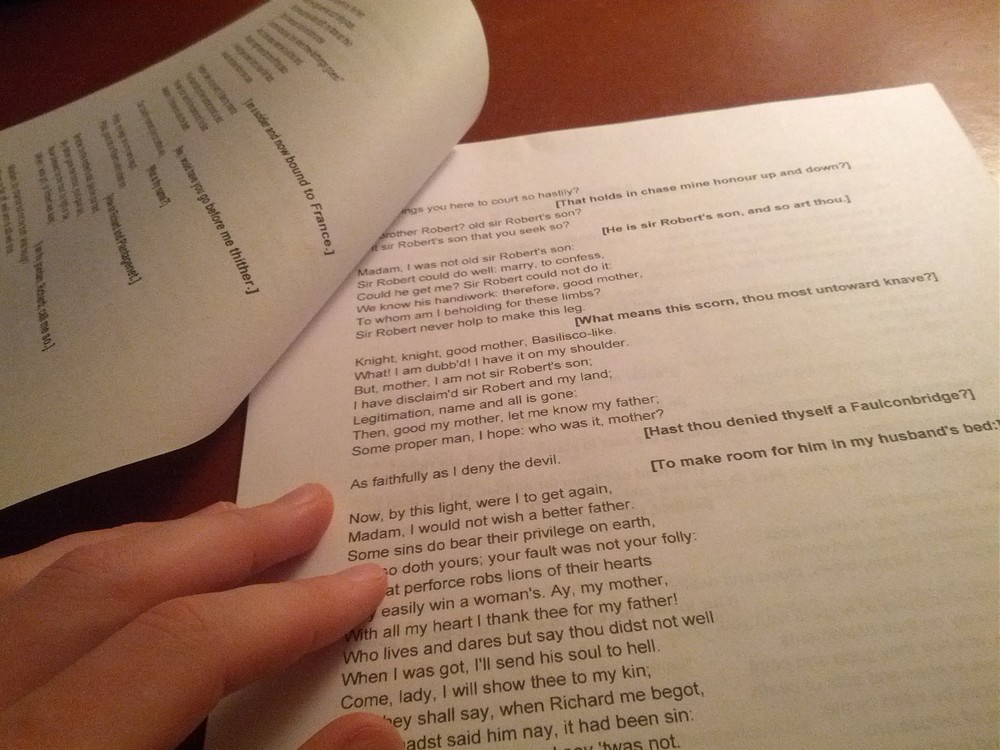Published: Sat, Sep 13, 2014; Updated: Sun, Mar 13, 2022
Reading time: 3 minute(s) (600 words)
King John Prep
Day 3: Just the Cues
This is part of a series on preparing my role for a ShakesBEERience reading of King John.
Today I did the opposite of what I did in my first session of work with this script; I went through and read just the cues, skipping over my own lines.
Remember, I haven’t read the full script of King John yet, and I won’t until after we’ve performed the play on September 22nd. So there’s a lot I still don’t know about these cue lines: who’s saying these things? Are they speaking to me? Someone else? How much time elapses between the end of one of my lines and my next cue?
There is one thing I do know: each of these lines is important enough to my character, The Bastard, to prompt him to speak. Each is the culmination of a chain of words that provoke him into response.
Here’s a page of my script, my lines on the left, the cues on the right in bold:
As you can see, all I have is the very end of each cue line, without any of the context. The Bastard may be responding to some idea that was expressed lines before – out of my sight (at least at this point in the process).
The page above is from a two character scene; this I can discern from the stage directions, some of which are preserved in my copy of the script. It’s a lot of easy question and answer. I know who I’m talking to (my mother), and my lines are direct responses to her. This is clear enough when a cue line ends in a question mark. I’m either answering a question directed at me, or jumping in to answer someone else’s question.
In some cases Shakespeare’s given me a good clue of how I’m responded to a cue line: some of the lines are shared. This means that my line is a continuation in meter of the line that is its cue. Together, they form a single, ten-syllable line of poetry. My response, then, is quick on the uptake, whatever else it may be. My thought follows the thought of whoever is giving the cue line.
Bring them before me. I will seek them out.
In these cases, if I follow the rhythm of the poetry the line I read should carry some of the meaning that Shakespeare intended, even if I don’t know precisely what that meaning is. It will carry on the thought that comes before it, with speed, without a pause, giving a sense of urgency, or of shared will and thought between the characters.
The cue lines in my first scene are all about parentage, inheritance, land, identity.
Through the rest of the play a lot of the cues are imperatives; orders, I assume, from the King who I understand my character to have a deep loyalty to. Not just orders to a subordinate, but requests which indicate trust and authority bestowed: “Here is my throne, bid kings come bow to it,” “Cousin, go draw our puissance together,” “Use our commission in his utmost force.”
The last words of the cues in the last scene are evocative, give me a sense of where this play ends up: “blood,” “clay,” “war,” “tears.”
Read the next post in the series.
